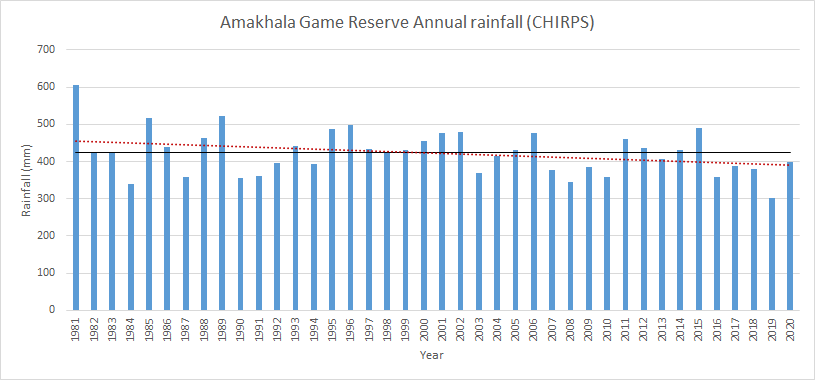
Prof. Tally Palmer, Director of IWR, was interviewed for an article on the impacts of drought and water management on citrus farmers in the Gamtoos Valley, Eastern Cape by the Sunday Times (available here for those with subscription access https://bit.ly/33LFlXU). The yield from some of the orchards is down by more than 50%, which has large economic and social impacts.
Notably, there are two types of water scarcity: primary and secondary. Primary water scarcity is when there is simply not enough water in the catchment. For example, the graph shows that the upper Bushmans River catchment has had below average rainfall for 10 out of the last 14 years. This pattern will have impacted the filling of Settler's Dam as well, for those affected by water cuts in Makhanda.
The other type of water scarcity, which is secondary, is when human failures drive the scarcity. For example, in the article Prof Mike Muller suggests that the problem for Nelson Mandela Bay would be solved by infrastructure development. Certainly, infrastructure development and especially maintenance is vital for proper water management, but dams can only deliver water that is there. It is failing governance that drives secondary water scarcity, and in South Africa, we do have a pattern of water governance failure (see research by Jai Clifford-Holmes and others, https://bit.ly/3bwNWC9).
The work conducted by the Institute for Water Research is promoting holistic systemic understanding of the interplay of people and the natural environment so as to understand and support adaptation and resilience in the face of interacting primary and secondary water scarcity.
